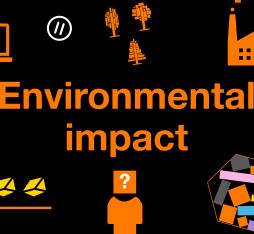"In the mobility landscape that is taking shape and given the progress of the electric car, it will be difficult for the individual hydrogen car to develop."
EZ10
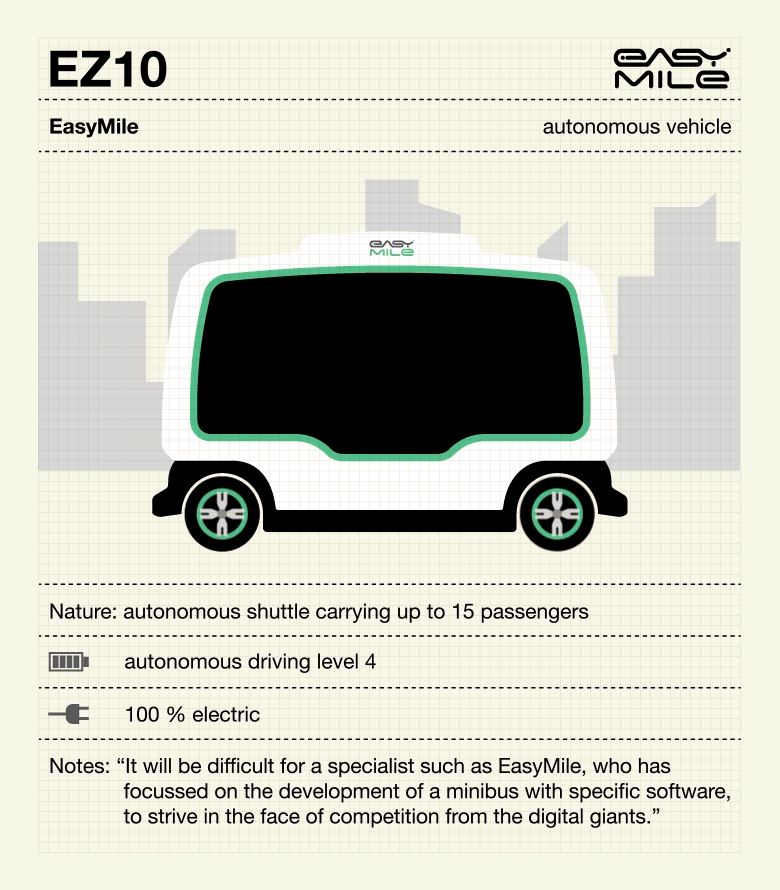
In this case it is the autopilot, that is the set of software and hardware components that enable the vehicle to drive autonomously in different situations, which constitutes the main technological issue, as the proper functioning of the navigation system requires it to have experienced a large number of events in a variety of conditions.
In order to develop an “operating system” for the autonomous and connected vehicles of tomorrow, as exists for smartphones, it is therefore necessary to have a global platform. Baidu does this in China with Apollo, its open platform that brings together over ten thousand developers and should speed up the development, experimentation, and deployment of autonomous vehicles. The Chinese company has chosen to use open source in order to go faster.
I think it will be very difficult for a specialist such as EasyMile, who has focussed on the development of a minibus with specific software, to strive in the face of competition from the digital giants, who bring together a great number of developers on open global platforms and whose technologies are tested by millions of people in a multitude of configurations.
Furthermore, if autonomous driving aims to develop the use of public transport and we assume that having a fleet of driverless vehicles helps to reduce running costs, will rural and suburban areas benefit from it?
I believe there is still a long way to go before services such as transport-on-demand develop in lightly populated areas. It will be necessary for a technological standard to emerge and autopilot to become a commodity for prices to drop and for the technology to be of real economic benefit for communities, public transport operators, and digital platforms such as Uber or DiDi (its Chinese competitor). In any event, in a European setting, alliances will be necessary in order to build champions.
Vehicle-to-Everything communication (V2X)
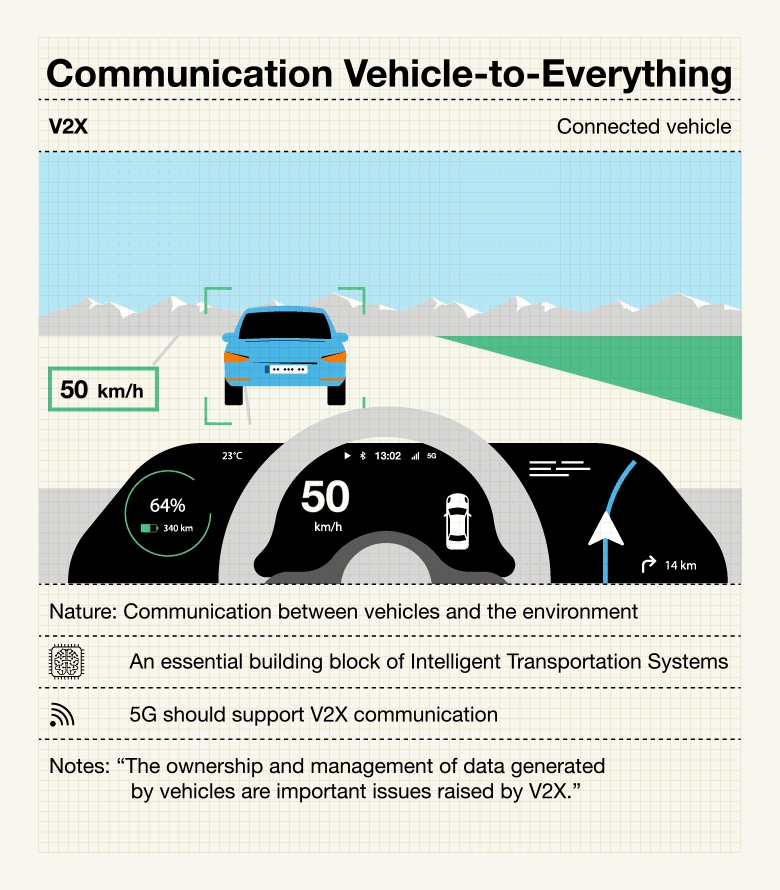
Behind V2X technology and, more broadly speaking, the connected vehicle, stakeholder games are being played out that involve car manufacturers and the digital giants, in particular concerning the management and connectivity of the onboard systems (geolocation, entertainment, etc.).
The former is relying on the latter to manage the onboard vehicle experience, that is to say the digital services offered on board the cars and that are to provide added value to such or such a model, all that is to make a car attractive to both drivers and passengers.
The ownership and management of data generated by vehicles are important issues raised by V2X. These data are essentially private. The General Data Protection Regulation (GDPR) enables the owner to retrieve them thanks to portability. They can then share these data for them to be reused. Likewise for data relating to public transport financed by the community, open data could make it possible to redistribute part of the value generated by the vehicles back into the ecosystem: to businesses but also to territories, research laboratories, etc.
As of today, we could equip community vehicles, such as buses or rubbish trucks, or develop partnerships with taxi firms, etc., to produce and distribute data of interest on traffic, the average speed in each street, or still the availability of parking spaces.
As the data generated by a vehicle first belongs to its owner, they could aggregate it in a personal account then decide to share it, anonymised, with their community, (municipality, etc.), researchers, or mobility stakeholders. This brings a new player into the ecosystem: the citizen. This is the vision carried by the Fabrique des Mobilités with “Mon Compte mobilité”[read below].
VoloCity
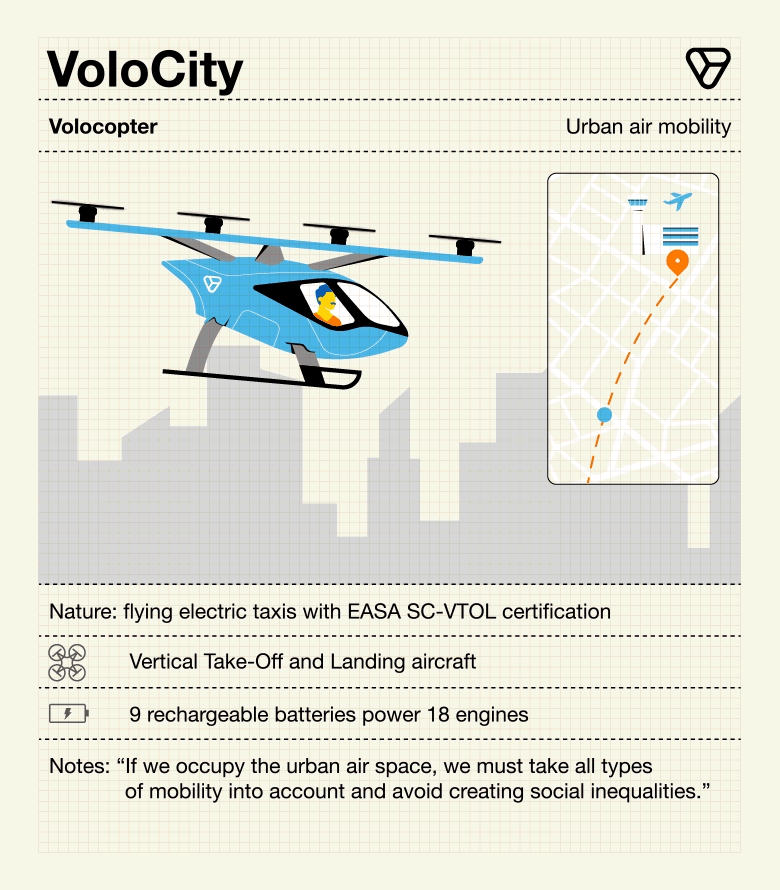
Flying taxis already exist. In Brazil, helicopters are used for transporting passengers; Uber has launched an on-demand helicopter service between Manhattan and JFK airport. The arrival of flying electric taxis in cities seems credible to me, with an ever-increasing number of use cases of urban transport. What will we do with these technologies and who will they really benefit? It is important to take territorial diversity and cultural differences into account. In China, undoubtedly thanks to favourable regulations, the use of drones is being explored in all areas. In Africa, several countries use drones, particularly for the delivery of medicine.
After the current boom in experimentation, a refocus on certain services will occur naturally according to territories’ needs. For greater equity, it will be necessary to also take into account differences between individuals: some people, in a virtually insular situation, go no further than 1 or 2 Km from their home, whereas others plan to travel into space.
Urban air mobility can ease certain traffic flows and thus increase the attractiveness of a large capital city for example. However, if we decide to occupy the urban air space – which has been relatively preserved up until now -, how do we take all types of mobility into account and avoid creating social inequalities? This will mean applying (as well as reinforcing) certain road traffic restrictions to this type of mobility so as to limit its environmental and noise pollution, as well as its footprint in the urban space.
Whim
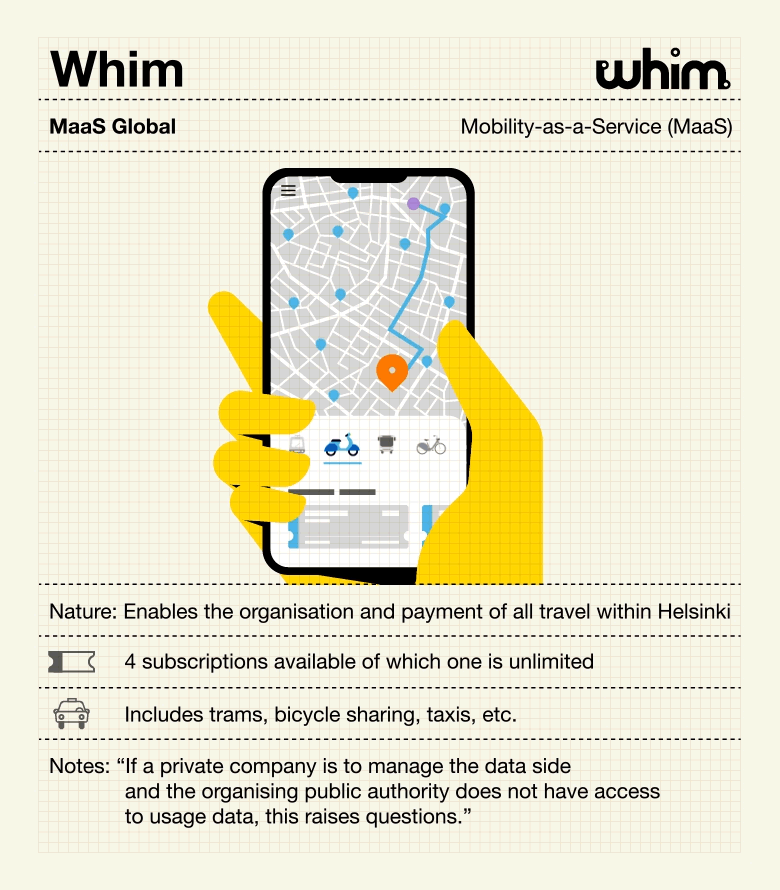
MaaS (Mobility-as-a-Service) will make it possible to centralise the various mobility offers and thus facilitate access to information and payment. Beyond these benefits, it is necessary to think carefully about the goals pursued. Is it about achieving territorial equity? Developing sustainable mobility?
The Finnish initiative’s primary objective is territorial attractiveness, and this has enabled Helsinki – a small city in which there are no real transport problems – to attract many mobility players.
Regarding the players involved, several combinations are possible, there isn’t necessarily a general rule. Certain building blocks of MaaS, such as route calculation, can be delegated to private stakeholders, especially if the algorithm integrates the rules set by the community such as those that result from road hierarchy.
However, if a private company is to manage the data side and the organising public authority does not have access to usage data, this raises questions.
Either way, when the MaaS project is implemented by a territory it is important to pool resources. Open source makes it easier to collaborate and to coordinate the work of a heterogeneous set of players.
For this reason, the French government’s transport.data.gouv.fr platform, which references all of the mobility open data, is very interesting. It enables players such as Kisio, who are developing Navitia, an open-source traveller information API, to build important technological building blocks for creating MaaS-type services.
New Mirai
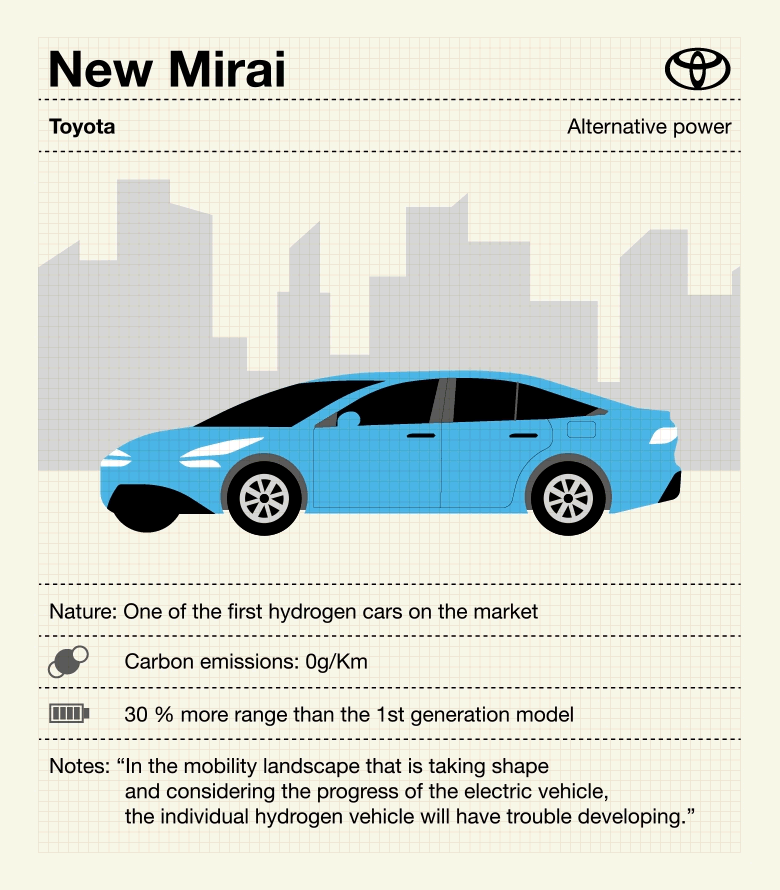
In this area, the various technologies have entered into a race for progress. The development of electric cars has made it possible to reduce the price of equipment and to bring new players into the game, who are now offering small cars at low prices: electric city cars are sold for less than 2,000 dollars in China [in France, Citroën sells the My AMI vehicle].
Once the electric car has become accessible, advances in terms of battery power provide sufficient range and there is a sufficiently-well developed network of charging stations, what does hydrogen really have to offer? Does it meet a requirement that electric cars cannot meet? I’m not so sure.
This does not mean the technology is not interesting. It may be in Japan’s interest to develop the hydrogen sector. Some territories may have a local production of by-product hydrogen. However, we may have known how to manufacture a hydrogen car for a long time, but are we capable of developing hydrogen station infrastructures and distributing this fuel at costs as low as those of petrol or electricity? Will this technology cover a wide range of use cases or will it remain confined to niche uses?
In the mobility landscape that is taking shape – with the concepts quoted above such as autonomous public transport or MaaS (which favours high-capacity modes of transport, active modes, then shared individual modes, and as a last resort the individual vehicle) -, and considering the progress of the electric vehicle, the individual hydrogen vehicle will have trouble developing. However, certain heavy or utility vehicles could switch to hydrogen due to longer range requirements.
Implemented by the Fabrique des mobilités and Capgemini, Mon Compte mobilité (MOB) is a platform currently being developed that brings together citizens, transport operators, public stakeholders, and businesses with the aim of simplifying access to the support for accelerating the transition towards sustainable modes of transport.
The user has access to a personal space containing all their mobility data and enabling them to view the transport offers and incentive schemes available in their area. When they travel, the data of their journey is added. They can thus provide the proofs necessary to benefit from subsidies granted by their employer or local authority, such as the sustainable mobility pass, which entered into force in France in May 2020. The user can choose to share other data so as to help improve mobility services.



